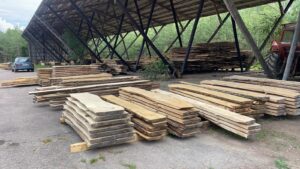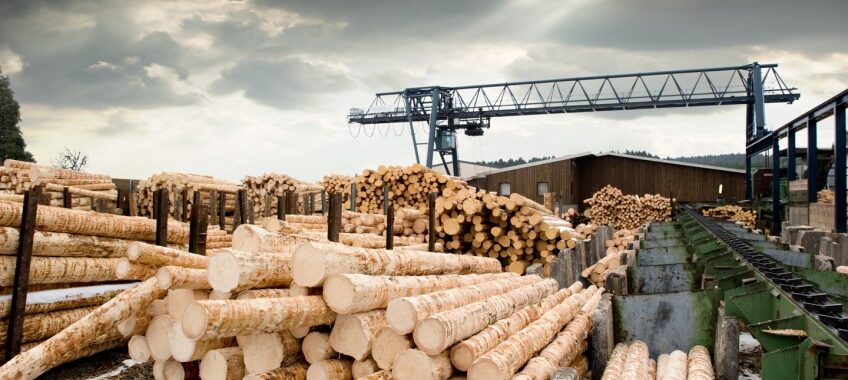27. September 2025
Enhancing Wood Performance: Techniques and Strategies
Wood is a versatile and widely used material, valued for its natural beauty and strength. However, to maximize its performance in various applications, certain techniques and strategies can be employed to enhance its durability, stability, and overall quality. Here’s a guide to some of the most effective methods for enhancing wood performance.

1. Seasoning and Drying Wood
- Why It’s Important: Properly drying or seasoning wood reduces its moisture content, which is crucial for preventing issues like warping, cracking, and shrinkage.
- Methods:
- Air Drying: Stacking wood in a well-ventilated area for several months to naturally reduce moisture content. This method is cost-effective but slow.
- Kiln Drying: Using controlled heat and humidity in a kiln to quickly dry wood to a precise moisture level. Kiln drying is faster and more consistent than air drying.
- Benefits:
- Reduces the risk of dimensional changes after installation.
- Increases the wood’s resistance to decay and insect infestation.
2. Applying Surface Treatments
- Why It’s Important: Surface treatments protect wood from external elements, such as moisture, UV rays, and physical wear, enhancing its longevity.
- Types of Treatments:
- Sealants: Seal the wood to protect against moisture infiltration, ideal for both indoor and outdoor use.
- Varnishes and Lacquers: Provide a hard, protective coating that resists scratches and enhances the wood’s natural grain.
- Paints: Offer the most comprehensive protection by creating a barrier that shields the wood from weathering and UV damage.
- Benefits:
- Extends the lifespan of wood exposed to harsh environments.
- Enhances the aesthetic appeal with a variety of finishes and colors.
**3. Chemical Treatments
- Why It’s Important: Chemical treatments can significantly improve wood’s resistance to decay, insects, and fire, making it suitable for a wider range of applications.
- Common Treatments:
- Pressure-Treated Wood: Wood is impregnated with chemical preservatives under high pressure to protect against rot and insects.
- Fire Retardants: Chemicals are applied to reduce the wood’s flammability, making it safer for use in construction.
- Benefits:
- Allows wood to be used in environments where untreated wood would deteriorate quickly.
- Increases safety and compliance with building codes in specific applications.
**4. Laminating and Engineered Wood
- Why It’s Important: Laminating involves bonding multiple layers of wood together to create a stronger, more stable material, while engineered wood products are designed for enhanced performance.
- Examples:
- Plywood: Made from thin layers of wood veneer glued together with the grain at right angles, offering superior strength and resistance to warping.
- Laminated Veneer Lumber (LVL): Engineered wood that combines multiple layers of thin wood bonded with resins, ideal for structural applications.
- Glulam Beams: Made by gluing together multiple layers of dimensional lumber, offering high strength and flexibility for use in large-span constructions.
- Benefits:
- Provides greater strength and stability than solid wood.
- Reduces the likelihood of defects such as knots or splits affecting the wood’s performance.
**5. Moisture Control
- Why It’s Important: Controlling moisture levels is key to preventing wood from expanding, contracting, or becoming susceptible to mold and decay.
- Techniques:
- Proper Ventilation: Ensures that wood is exposed to consistent air circulation, reducing the likelihood of moisture buildup.
- Dehumidifiers: Used in environments with high humidity to maintain stable moisture levels in wood products.
- Waterproofing: Applying waterproofing treatments or membranes to wood exposed to high moisture conditions, such as outdoor decks or bathroom floors.
- Benefits:
- Maintains wood’s dimensional stability and structural integrity.
- Prevents damage caused by excessive moisture, such as rot and mold.
**6. Heat Treatment
- Why It’s Important: Heat treatment modifies the wood’s properties, making it more resistant to moisture and biological decay without the use of chemicals.
- Process:
- Thermally Modified Wood: Wood is heated to high temperatures in a controlled environment, changing its chemical and physical properties.
- Benefits:
- Increases resistance to rot and insects.
- Reduces the wood’s tendency to absorb moisture, improving dimensional stability.
- Enhances the wood’s appearance by darkening its color, giving it a rich, uniform look.
**7. Reinforcement Techniques
- Why It’s Important: Reinforcing wood can enhance its load-bearing capacity, making it suitable for more demanding structural applications.
- Methods:
- Metal Fasteners and Brackets: Used to reinforce joints and connections in wood structures, increasing their strength and stability.
- Fiber Reinforcement: Incorporating materials like carbon fiber or fiberglass into wood can significantly increase its strength and stiffness.
- Benefits:
- Enables wood to be used in larger, more complex constructions.
- Increases the durability and safety of wood structures.
**8. Maintenance and Regular Inspection
- Why It’s Important: Regular maintenance is essential for ensuring that wood retains its performance over time.
- Tasks:
- Cleaning: Regularly remove dirt and debris from wood surfaces to prevent degradation.
- Re-Sealing: Reapply sealants, stains, or finishes as needed to maintain protection against moisture and UV damage.
- Inspection: Regularly inspect wood for signs of wear, damage, or insect infestation, and address issues promptly.
- Benefits:
- Prolongs the life and appearance of wood products.
- Prevents minor issues from becoming major problems, saving time and money in the long run.
Conclusion
Enhancing wood performance involves a combination of proper selection, treatment, and maintenance techniques. By understanding and applying these strategies, you can significantly extend the life, durability, and beauty of wood in any application, ensuring that it meets the demands of your projects for years to come.


Leave A Comment